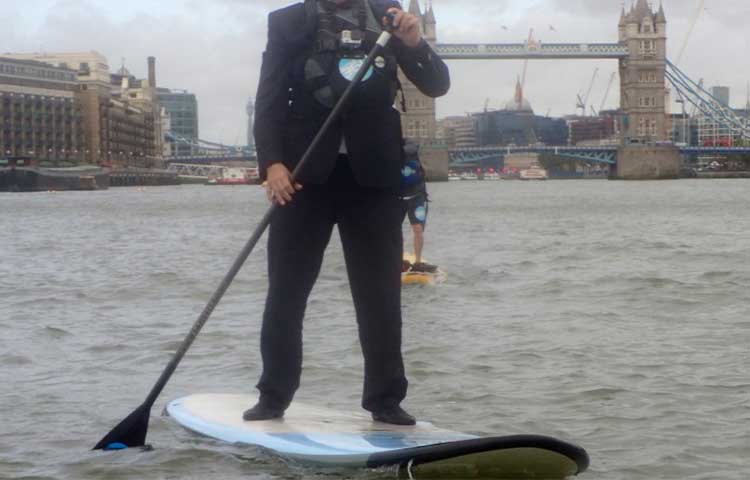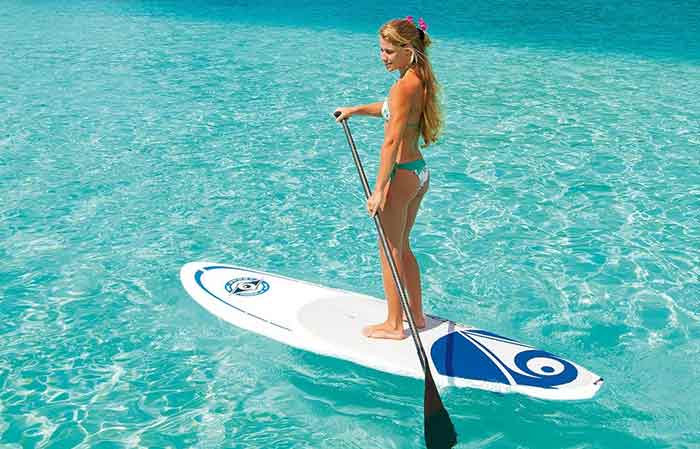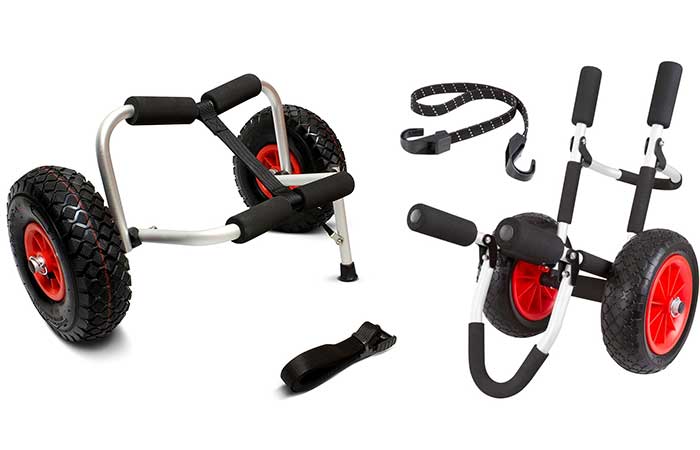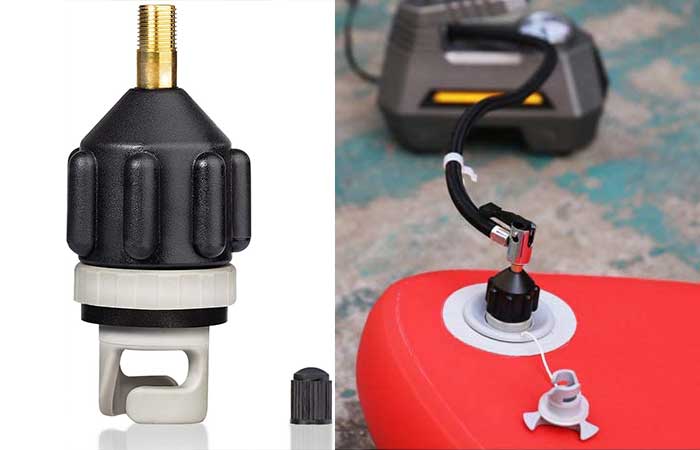What Size Paddle Board do I Need?
If you have chosen to get into paddleboarding, you definitely need the right-sized board that will hold up your weight and help you maintain buoyancy throughout the entire session. Most beginners may not know what size to purchase, better yet, where to even begin.
There is no particular size that will work for everyone. The right size of a SUP will depend on some factors such as your physique, your weight, paddling level; beginner intermediate or advanced and much more. Following is a guide on how to select a board size best suited for your weight and height, plus more other size-related ideas.
What Size Paddle Board is for My Weight and Height?
The size you need for paddleboarding depends on way more variables than just your weight and height. You may need a different size depending on your skill level or the purpose for which you are purchasing the board. Either way, for this section, we shall only look at two vital factors;
- Weight
- Height
- Thickness
The Weight Variable
While selecting a board, you will find that they weigh differently and they also support different levels of body weight. Probably due to its construction, the board can only maintain stability if the weight exerting on it is manageable.
Besides stability, your weight can also affect the volume, and ability to maneuver in the water. The volume, usually expressed in liters, indicates the board’s ability to remain buoyant even with weight is exerted over it. If the board can’t/ doesn’t displace the right volume then you will also find it hard to paddle.
Check out this SUP Volume Chart below
| SUP VOLUME CHART | |
| Level of Skill | Volume Calculator |
| Beginner/ Novice/ Balance Challenged | Body weight × (1 – 1.4) = approximate vol( L) |
| Advanced/ Intermediate | Body weight × (0.8 – 1) = approximate vol (L) |
| Expert/ Professional | Body weight × (0.5 -0.8) = approximate vol (L) |
The same goes for maneuverability, if your weight capacity is heavier than the expected amount, the board will be lower in the water causing you to strain to paddle. It will also drag behind and in some extreme scenarios, you can experience sinking…which can result to drowning.
Finally, your weight is used to determine the perfect length of board you should use. Take a look at this chart below.
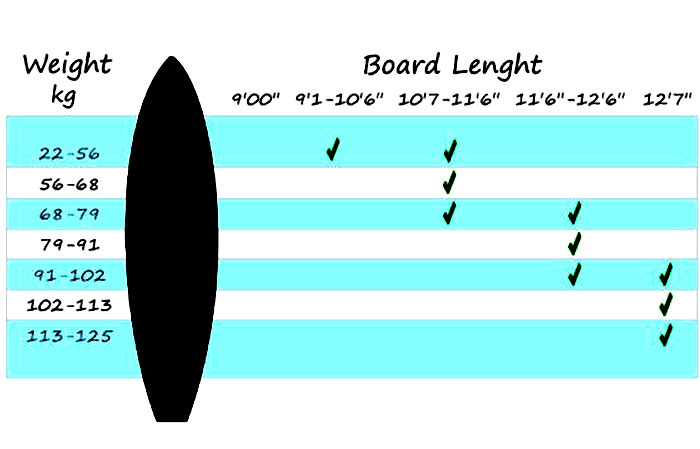
What you can see is that for every weight group the inches in length differ since the board will need a much bigger space to provide a sweet spot in the middle to balance out the weight.
SUP Height
There are claims that your height can also affect the size of the board you should use. The theory behind it is that taller people have a higher point of gravity, meaning they might have difficulties maintaining balance on the same board a short person would.
However, there are cases where some taller individuals have more bone mass meaning they are heavier, which brings us back to the original point above that weight is a huge determinant on the size of the paddleboard is right for you.
SUP Thickness
Last but not least, the thickness of the board. The dimensions will fall between four to five inches thick. This is considered the least important factor after the weight, length, and width since it’s more of a third stage factor that depends on the volume and weight capacity of the individual.
Given an option of the same length and width of a board bit different thicknesses, the thicker option is a better option. This is because it’s better optimized to handle more weight capacity than the former. In lay man’s terms, the thicker it is the more volume it has, hence, the more weight it can support.
What Factors will Determine the Size?
Following are some of the factors will determine the size in terms of volume, width and length.
Body Weight & Type
Volume, as explained above, is the amount in liters that should be replaced by water once you get on your board. If the liters surpass the expected weight, then the board can no longer support your buoyancy.
Most brands will highlight for you how many liters of volume they support from 150L to over 300L, depending on the construction of the board, among other variables. If you’re unsure about tour volume, you can use these formulas.
Beginners – your weight in kg x 2 (for example, 100kg x 2 = 200 litres)
Intermediates – your weight in kg x 1.7
Advanced – your weight in kg x 1.3
In terms of body type, smaller people tend to yo for narrower paddleboards since it will be much easier to gain balance from a sustainable smaller board than otherwise. Smaller boards are also a better choice for smaller people since they can easily hold on to the board by its edges, they can steer the board, among other things.
Skill Level
Racers, surfers and professional riders will prefer longer and narrower boards because they are much faster, glide better, and offer excellent performance in comparison. This means that anything below 30 inches is their cup of tea. Beginners will, however, require a board size that’s even 34 inches wide so they can learn the basic techniques plus they will have the ability to perform a stroke efficiently
Type of Surfing
The type of surfing can dictate the size of a paddleboard. In terms of length, you have the choice to select different styles of paddleboards from the all rounded kind, surfing option, and even racing. This is because this factor significantly affects the speed, glide, and maneuverability of your board.
Longer boards will be faster than shorter ones, however, shorter ones have better maneuverability, turning, and navigation. Which is why the length size of your board goes hand in hand with the intended purpose. Here’s a guide on different lengths of boards and their functions.
- Long – these measure over 12.6 inches and above. Great for recreational paddling and long-distance touring. Longboards such as these fall within the displacement hull and tend to be faster than either short or medium-sized boards.
- Medium – ranging between 10 to 12 inches, these boards are perfect for all-rounded use and widely spaced yoga SUPs. There are no specifications as to whether they must have planning or hull displacements.
- Short – these ones measure 10 inches and below. They re excellent for surfing and a great size for young children as well. They also have the best maneuverability compared to the other board kinds.
The length by a long short is affected by volume and weight capacity. If your volume is bigger, a longer paddleboard can be your best option and vice versa. The longboard will offer stability, as well as space to carry extras with you on board without having to feel squeezed or needing space.
The width of paddleboards ranges between 25 inches to 35 inches, to accommodate various needs.
Beginner paddleboarders will need a wider board because they need the extra space to be able to build on their stability.
The width can also affect the speed of your board. If it’s too wide, you will be much slower in water, plus you will also take longer to change course or direction.
The width of your board can also be affected by other factors, therefore, affecting your size options. For example;
Accompaniments
If you know you will be needing extra space on board then a wider, thicker and longer board is best for you. This offers you the best stability and space without affecting the board’s performance
This is true for those who carry a lot of things like, pets, fishing equipment or those who want to use the deck area for yoga or exercise.
The Right Size for Various SUP Board Types
Even with the different factors in play, there are certain dimensions that should change depending on the type of SUPs you need. Here’s a rundown of the right sized board for each paddleboard kind.
- SUP surfing – the boards have a short length of about 10 inches only. They are also narrower and have pointed nose and tail. This also fits the classification for a racing SUP – they’re short, sharp edges, and narrow.
- All-around SUP – the most versatile option there is and that can be used for a variety of other functions like fishing, exercising and cruising. The board’s perfect size is a length of between 10 to 13 inches and a width of 29 to 32 inches. They are beginner-friendly as well.
- Touring SUPs – these ones are also versatile to offer the best long-distance support. They have a similar shape to the all-round but are longer to about 14 inches. The width also ranges between 30 and 33 inches. Some touring SUPs may however have a more pointed nose giving an even longer impression.
- Yoga and fitness SUP – with all the posing and exercising, these boards are very wide measuring up to 36 inches. The length, however, is medium ranging between 1p to 12 inches.
Further SUP Ideas & How-tos
The following is a collection of more Stand up paddleboarding ideas and board guides
SUP Equipment & Accessories
- Best Large SUPs for Bigs Guys & Multi-person(2-6)
- Best Bamboo Paddle Boards
- Best SUP-Kayak Hybrid Boards
- Best Fishing SUPs
- Best Pumps for Inflatable Stand Up Paddleboards(ISUPS)
- Types of Stand Up Paddleboards
- Inflatable vs Solid/Rigid Paddleboards
- How Long Do Inflatable Paddle Boards Last?
- How to Store SUPs-Storage Ideas & DIY Option
- Best Paddle Board Roof Racks for Cars, SUVs & Trucks
Paddleboarding
- What to Wear for Stand Up Paddleboarding?
- How to Paddle Board-Is it Hard? SUP Beginner Techniques & Tricks
- SUP Paddleboarding Tips & Tricks Every Paddleboarder should know
- How to Get on a Paddle Board, After Falling & from a Dock
- How many Calories does Paddleboarding Burn?
- Best Paddle Board Workouts/Exercises to Improve Your Fitness
- Benefits of Paddleboarding(SUP)

